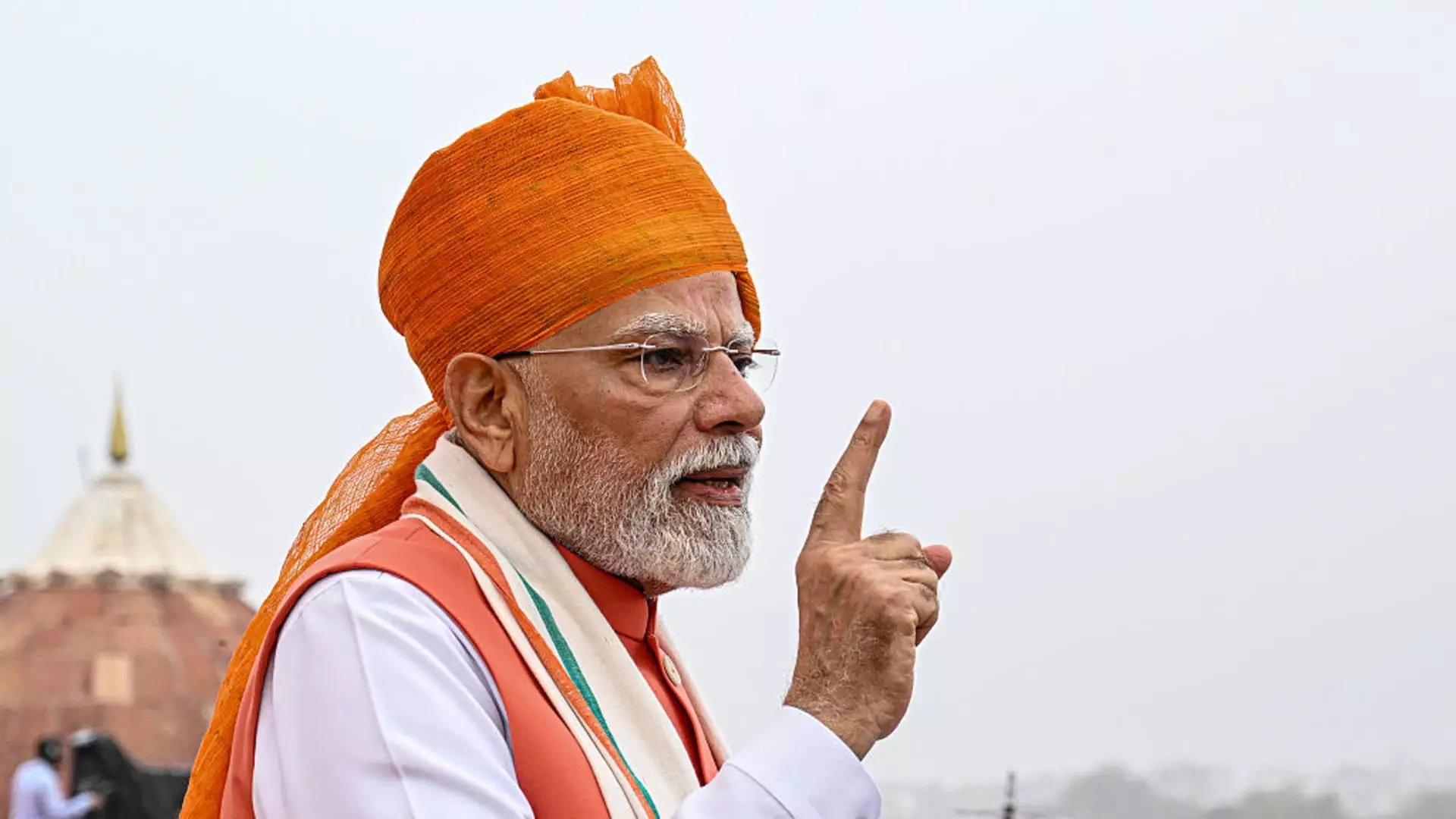India is at a pivotal crossroads, with recent developments reflecting both a courageous push for economic revival and an underlying gamble that could backfire if not managed carefully. Prime Minister Narendra Modi’s announcement of sweeping tax reforms has sparked a sense of optimism among investors and business leaders. Yet, beneath this veneer of hope lies a complex reality: the nation’s economy teeters on the edge of geopolitical tensions, burgeoning domestic needs, and the inherent risks of radical policy shifts. While proponents argue that these reforms will simplify India’s sluggish GST system and invigorate key sectors, critics rightly question whether such measures might oversimplify an intricate fiscal landscape and inadvertently deepen systemic vulnerabilities.
The move to overhaul India’s Goods and Services Tax (GST) by reducing its structure to two broad slabs—5% and 18%—may appear as a pragmatic step towards easing compliance burdens and stimulating economic activity. Nonetheless, the devil is in the details. Can a streamlined tax regime truly capture the nuances of India’s diverse economy? Or does this reduction risk undermining fiscal stability, particularly at a time when the government is grappling with substantial revenue shortfalls and geopolitical headwinds? The enthusiasm surrounding these reforms must be tempered by a rigorous examination of whether they provide sustainable growth pathways or merely serve as short-term bandages, masking deeper fiscal fragility.
Economic Growth in the Crosshairs of Global Uncertainty
India’s recent stock market rally and currency stabilization offer a sense of confidence, yet they may be premature. The nation is navigating a complex international terrain marked by the United States’ as-yet unpredictable tariffs and sanctions, particularly concerning India’s energy imports from Russia. Washington’s recent imposition of additional tariffs raises stakes that undermine India’s export potential and complicate its economic outlook. The hope that domestic consumption alone can buoy India’s growth—projected at around 6.5%—is optimistic to the point of recklessness if external shocks intensify.
Furthermore, investment in sectors like the automobile industry, long marred by sluggish demand, has shown signs of modest recovery. But can this momentum be sustained without addressing core structural impediments? The recent growth in passenger vehicle sales, albeit promising, cannot mask the underlying fragility of India’s manufacturing and logistics sectors. It’s a fragile balancing act—an apparent rebound driven by policy changes that may not be resilient enough to withstand global volatility or internal pressures like rising household debt and stagnant wages.
Domestic Consumption: The Double-Edged Sword
Modi’s emphasis on bolstering domestic consumption through tax reforms is both strategic and risky. On one hand, it aligns with India’s primary economic driver—internal demand. Lowered taxes and simplified procedures aim to incentivize spending, especially in urban centers where consumers are increasingly shifting towards luxury goods. This structural shift could serve as a catalytic force, fostering growth in sectors like retail, hospitality, and real estate.
However, this reliance on consumption is a delicate strategy. India’s income distribution remains highly unequal, and with real wages stagnating, the sustainability of increased consumer spending is questionable. The recent slowdown in household savings and low income growth pose significant threats to the durability of this consumption-driven growth model. The risk is that boosting consumption through fiscal reforms might temporarily inflate demand but fail to generate long-term, inclusive economic progress. Moreover, the surge in household borrowing—apparently driven by low interest rates—could lead to greater financial vulnerability if not carefully managed.
Reform as a Double Agent: Catalyst or Catalyst for Crisis?
The Modi administration’s reforms, while rhetorically impressive, possess a dual nature. They are both a necessary evolution toward efficiency and, potentially, a dangerous oversimplification of complex fiscal realities. By pushing to rationalize and modernize the GST system, India aims to create a more transparent and investment-friendly environment. Yet, these changes could meet resistance from entrenched interests or cause unforeseen compliance issues, especially among smaller enterprises ill-equipped to adapt quickly.
Additionally, India’s fiscal health remains precarious. The decline in inflation to 1.55% is a positive sign, but it raises questions about whether consumer demand can sustain growth without igniting inflationary pressures in the future. The government’s reliance on consumption to fuel growth, especially amid shrinking savings, is inherently risky—any disruption could trigger a downward spiral, impacting employment, investment, and social stability.
In the end, India’s recent tax reforms and policy shifts embody a bold, optimistic leap—a gamble that could propel the country forward or plunge it into new uncertainties. The success of this strategy hinges on vigilant management, inclusive growth policies, and a realistic assessment of global and domestic risks. The question remains: Is India truly ready to embrace this transformative phase, or are policymakers overly confident in the power of reforms to fix deep-rooted structural issues? Only time will tell whether this ambitious moment will lead to sustainable, long-term prosperity or become a cautionary tale of overreach.


Leave a Reply